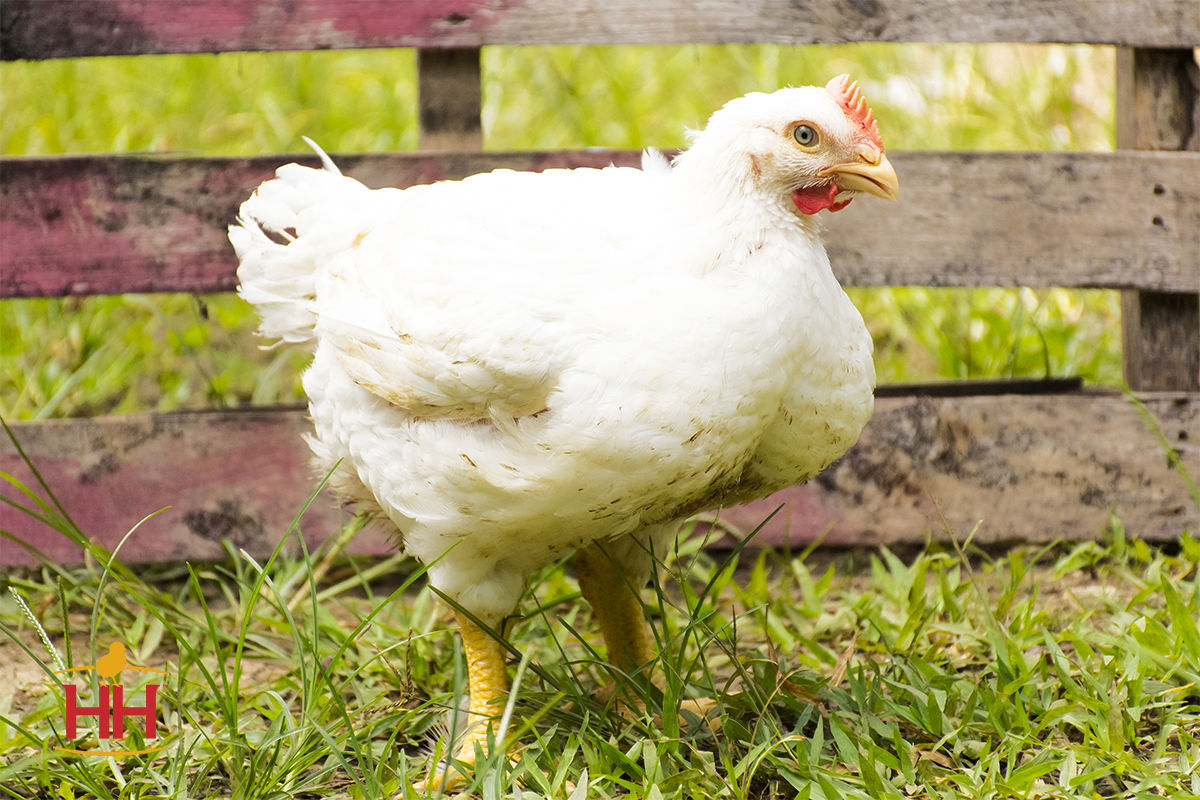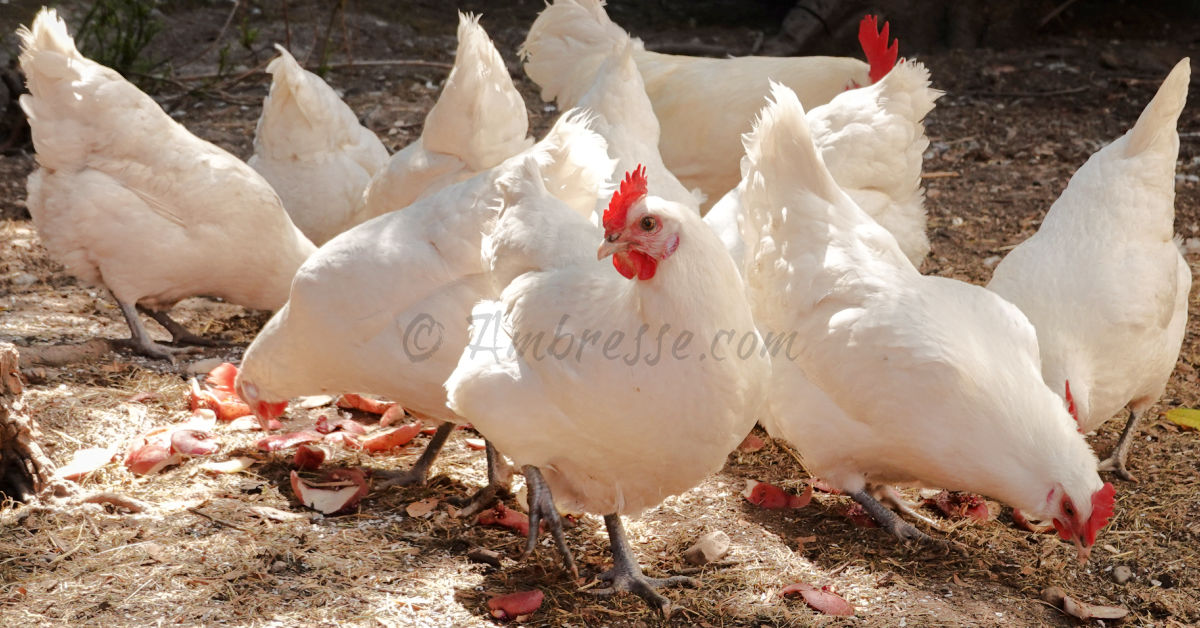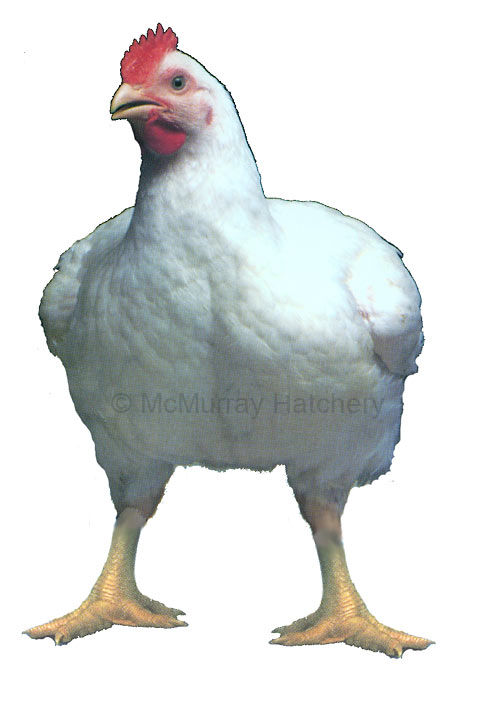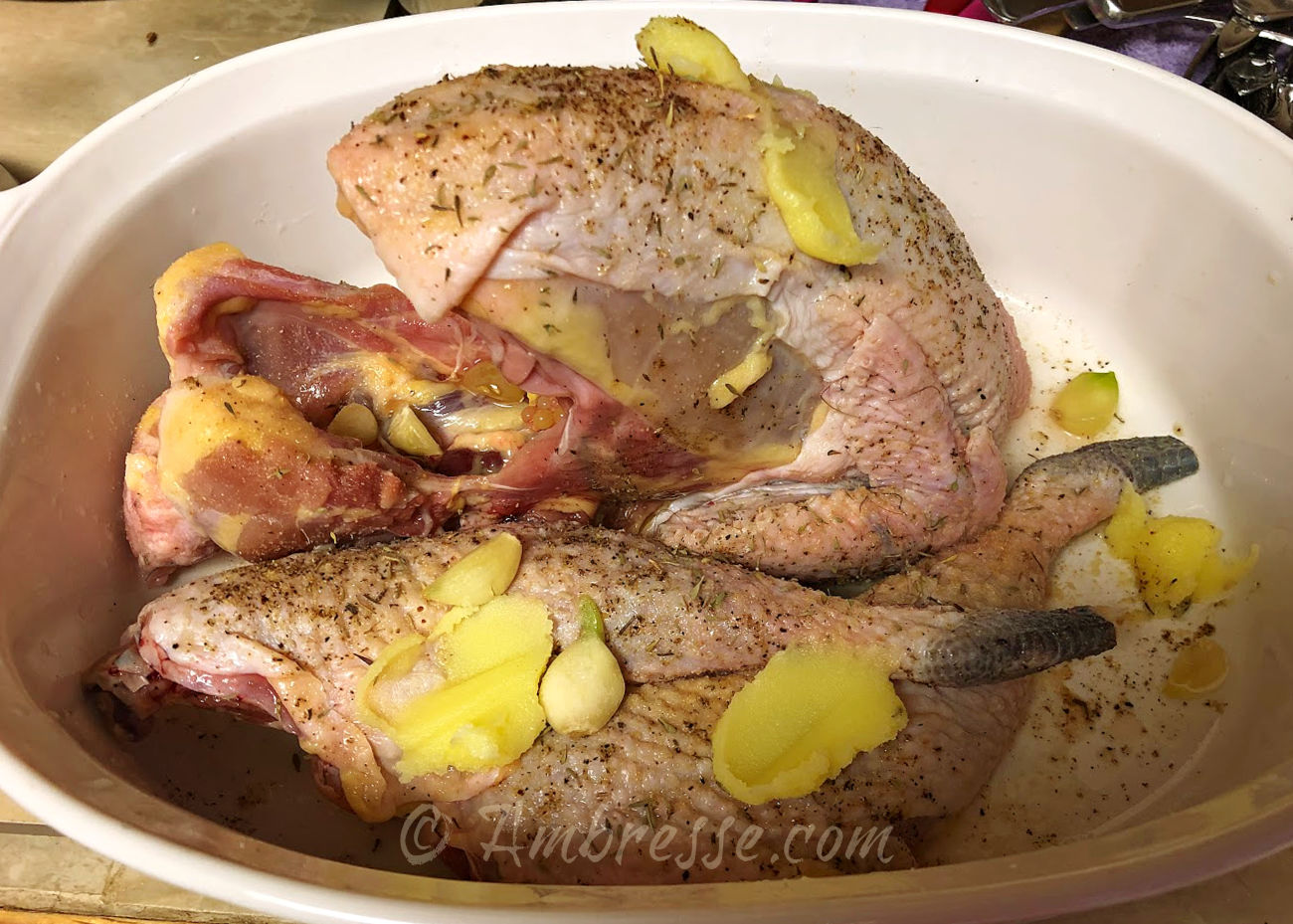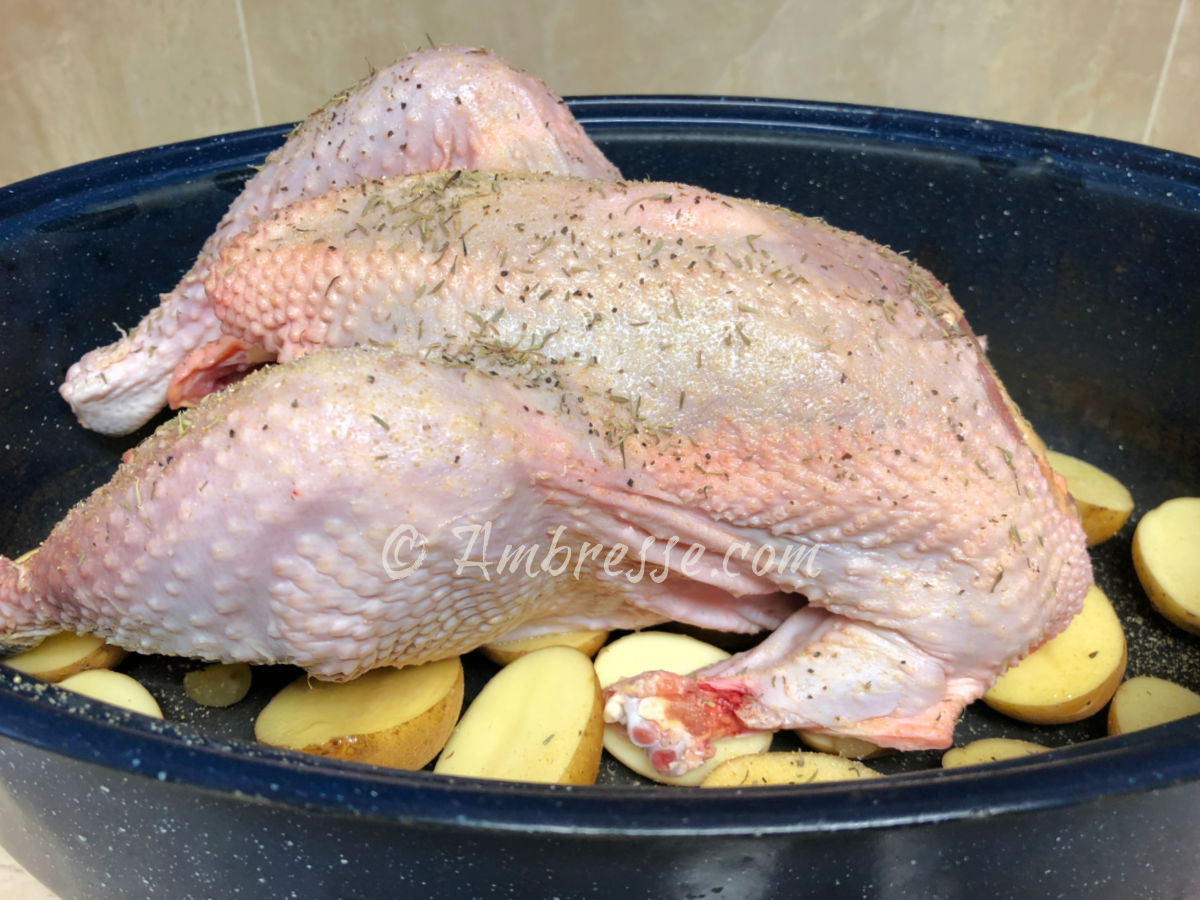Cornish Cross Chickens
Cornish Cross Chickens: The only chicken sold in supermarkets and around the world. We'll review the Cornish Cross hybrid, and how they compare to bred-to-standard heritage chickens like American Bresse.
Cornish Cross Chicken is a Terminal Hybrid
Cornish Cross chickens are the result of a 4-way terminal cross using cocks and hens that have been specifically bred to produce chicks with screaming fast growth and double the muscle.
"Terminal" means what it sounds like: ALL the offspring are slated for processing because their circulatory system cannot keep up long term with the bodily needs of rapid growth.
4-Way Terminal Cross
Creating such a four-way terminal cross is way above the paygrade of a typical backyard breeder because the cross-breeding program is very involved and takes years to bring to full fruition.
Growers take two-way-crossed hens (AB) and breed them with two-way, differently-crossed roosters (CD), producing four-way crossed (ABCD) offspring. 100% of these 4-way crossed offspring wind up shrink-wrapped on grocery store shelves or in homestead freezers.
For this reason, there is no sustainability to raising Cornish Cross meat birds. Every chick you receive in the mail is raised to 6-8 weeks of age and then processed. You will need to re-order another shipment of chicks in order to raise more meat birds. If the grower runs out of chicks, you’ll have to wait, or figure out a Plan B.
Cornish Cross chickens are nearly exclusively the main commercial meat breed around the globe. Hundreds of millions of them are hatched and shipped to all corners of the compass. The chicks gain at least a pound a week, and are market-ready in 6 to 8 weeks flat. If you miss the target date by much, you may lose birds to sudden death. Processed carcasses weigh 4.5 - 7 pounds.
About Cornish Cross Chickens
"Cornish Cross are the McDonald's of the poultry world," says Kerby Jackson, long-time poultry breeder and genetics expert. I interpret that to mean they are ubiquitous, and of possibly questionable nutritional quality, or at least, flavor.
More than 95% of all chicken grown globally are Cornish Cross Chickens. They have been bred with double muscling genes and maniac growth genes for the specific purpose of producing lots of meat in the shortest time possible.
When Cornish Cross chickens first came to market in the mid-1940s, the allure of a speedy time to market quickly overwhelmed the entire global market, including restaurants and supermarkets everywhere, and homesteads. (Some homesteaders today prefer the sustainability of raising non-Cornish Cross chickens.)
Because nearly everybody has been cooking and eating Cornish Cross chickens since the 1950's and before, consuming this type of chicken is all that anybody of the past and current generation has ever known, especially if one has never raised chickens.
Hybrid Strains of Cornish Cross Chickens
The main hybrid strains of Cornish Cross Chickens today are Ross strains, and Cobb strains. There are actually very few distinctions between them overall; no matter the strain, you will end up with on average 6-8 pound carcasses within that many weeks.
Credit for photo at right: Murray McMurray Hatchery.
Here is a very general overview of the different strains:
- Ross 3081: The most versatile and easy to manage bird in the Ross lines. It puts on weight slowly to start, then grows rapidly from 4 weeks on. It will be ready for processing by 7 weeks at an average weight of 5-8 pounds.
- Ross 7081: The genetics are similar, but this strain tends to explode in weight gain in the last 2 weeks, and can tend to overshoot the weight goals (an unintended consequence is sudden death). At 8 weeks the bird may be over 9 pounds. They are larger overall, with a slightly higher carcass yield due to thicker thigh and leg meat.
- Cobb 5002: Is branded "the world's most efficient broiler," since it is very feed efficient - can give superior weight performance on lower cost feed rations. They are rounder than Ross strains, and similar to Ross 308 in that the growth rate is manageable. Its feathers may have black flecks in them (marketability not affected).
What's Not to Love
about Cornish Cross Chickens?
It's a fair question. Cornish Cross chickens would not have gained such global acceptance if the meat were not moist and palatable. The meat is soft and tender, and it certainly tastes like chicken.
But those who understand and raise poultry can explain:
---Cornish Cross chickens are processed at six to eight weeks of age. That is extremely young. At that age, Cornish Cross are literally still babies.
---Because they are babies, the meat is tender, albeit lacking texture. It is often easy to cut with a fork unless it has been completely overcooked.
---Also due to the early harvest, the meat has not had time to develop any true depth of poultry flavor. Nevertheless, the mild flavor meets the current global expectations for "tastes like chicken." The flavor of "Cornish Game Hens," which are nothing more than Cornish Cross, either male or female, harvested at around 4 weeks of age, is often described as delicate. Today's recipes tend to call for additional spices to enhance the flavor.
---Many Cornish Cross poultry products have been made artificially moist, due to brine injections into the meat, a process called plumping3. (Isn't that...cheating??)
American Bresse vs Cornish Cross Chickens
Both breeds are raised for meat, which is why this page compares the market characteristics of Cornish Cross Chickens to those of American Bresse or other bred-to-standard heritage chicken.
Cornish Cross Chickens can't compete with American Bresse Chickens in rich and succulent flavor or fat marbling, because the extremely early harvest of Cornish Cross reduces the flavor as well as the texture of the meat. This doesn't seem to matter to the market, but I wonder if this is because no one knows what they are missing?
American Bresse Chickens can't compete with Cornish Cross in speed to market (6 - 8 weeks) for sure, but I doubt you'd want them to, as they'd lose the magic of their flavor and succulence. Am Bresse chickens require a minimum of about 12 weeks to develop the intense poultry flavor and fat marbling for which they are known. A big advantage to raising American Bresse is the sustainability factor - you can hatch and raise your own birds without having to depend on a distant hatchery.
Nutritional Differences between Commercial Cornish Cross Chickens and Non-Hybrid Heritage Bred Cornish Chickens
On one hand, chicken is chicken. On the other hand, selective breeding, hybridization, and maturation at the age of processing can make a possibly big difference in the nutritional quality of the chickens you eat.
Nutritional, Sensory, and Quality Attributes of Heritage Bred
Chicken and Commercial Broiler Meat
In 2013, Ms. Alexandra R. Christiansen completed a comparison study of heritage bred chicken meat vs commercial broiler meat, as part of her Master of Science degree in Food Science. In her scientific study, "Nutritional, Sensory, and Quality Attributes of Heritage Bred Chicken and Commercial Broiler Meat,"4 Christiansen made some observations.
She reviewed 25 carcasses each of two different types of chicken, the Heritage Bred Cornish Chicken (HB) and the commercial hybridized Cornish Cross chicken (CM).
The study looked at quality attributes of the meat, and also fatty acid composition. It also looked at the sensory and textural qualities of the meat, because this is a big part of the eating experience.
The age of heritage bred chickens was over 116 days of age (16.5 weeks, or 3.95 months of age). The age of the hybrid Cornish Cross commercial birds at butcher was approximately 42 days of age, or 6 weeks old. This is because Cornish Cross is normally butchered at that age.
The Heritage bred Cornish Chickens were sourced from Good Shepherd Poultry Ranch in Linsborg, Kansas. The poultry was labeled: "Free Range, All Natural, Air Chilled, No Artificial Ingredients, No Antibiotics, All-Natural-Minimally Processed, and No Water Added."
The Commercial Cornish Cross poultry (water cooled) were processed by HyVee, Inc., in West Des Moines, Iowa, and labeled: "Fresh Young Chicken with Neck and Giblets, 100% natural with less than 7% water retained, No Artificial Ingredients, Minimally Processed, No Added Hormones, and No Added Steroids."
Another group of commercial Cornish Cross poultry (air chilled) were branded Smart Chicken, and sourced from Tecumseh Poultry LLC, in Waverly, Nebraska. These were also butchered at 42 days of age and were labeled: "Young whole Chicken, No Tips or Giblets, All Natural, Grain Fed, Raised Without Antibiotics, Minimally Processed, and No Artificial Ingredients."
Comparison Study Conclusions
Here are Ms. Christiansen's observations:
- Without skin, moisture and fat content were similar between both categories.
- Heritage meat was healthier due to higher omega-3 fatty acids. Heritage meat (with or without skin) had significantly greater amounts of (desirable) omega-3 polyunsaturated fats (anti-inflammatory). Breast and thigh meat (with skin) of Heritage birds contained 35.60 and 35.21% of healthy polyunsaturated fatty acids as compared with commercial breast and thigh meat (with skin) of 20.96 and 20.45% respectively.
- Heritage meat was healthier due to better omega-6 to omega-3 ratios. Differences in the ratio of (less desirable) omega-6 (inflammatory) to omega-3 (anti-inflammatory) fatty acids were also significant. The ratio between omega-6s and omega-3s was more favorable in heritage bred chickens than in commercial chickens (12.79 [indicating higher omega-3] vs. 14.99 [indicating lower omega-3s]). (The study did not specify the feed used. It would be expected that standard commercial feeds were used.)
- Cornish Cross weights were higher. Whole carcass weight of Cornish Cross was 71% greater than HB, breast weight of Cornish Cross chickens was 148% greater than HB, and bone-in thigh weight of Cornish Cross birds was 52% heavier than HB.
- Commercial Cornish Cross had less connective tissue, resulting in more tenderness overall increased myofibrillar tenderness.
- Heritage bred thigh meat was perceived to be more chewy, or in the words of the study, "had the highest peak force values for Warner-Bratzler (3.47 kgf) and Allo-Kramer (7.22 kgf/g sample) shear tests."
- On the other hand, Heritage bred thighs gave a 2.1% higher yield than commercial thighs.
The conclusion of the Abstract of this study stated: Heritage meat has better fatty acid profiles (anti-inflammatory), while commercial carcasses are typically larger and more tender.
My contention on the page, How to Cook Bresse Chicken, is that the appropriate cooking method can turn American Bresse chickens into absolutely gourmet experiences, and I'm speaking from very happy experience!
We Could Use A Third Breed Comparison - Using American Bresse!
I'd love to see a comparison between American Bresse nutritional and quality profiles and those of both Cornish Cross and Heritage Cornish chicken. American Bresse are certainly heritage-bred, however their distinctive Bresse characteristics may not be reflected in this 2013 study.
If I were to guess, Cornish Cross would keep the edge in size difference, however the American Bresse would probably narrow the size gap somewhat, since they grow rapidly.
But, what does finishing do to the fatty acid profiles, if anything? In my opinion, this is a study that needs to happen, both without finishing, and with finishing.
Eating Grocery Store Chicken vs Poulet de Bresse
There are significant distinctions between cooking and eating grocery store chicken (the familiar Cornish Cross), and cooking and eating most other heritage or homestead chicken. That divide widens even further when poulet de Bresse becomes part of the equation.
Just the other day I told the hub that our American Bresse chickens have completely spoiled me for nearly all other meats. The flavor is just so rich!
BUT: If you fail to cook the bird in alignment with its age and genetic potential, you may be disappointed with the results. This is because it will be so different than the Cornish Cross grocery store chicken that we are all used to. The entire world has grown accustomed to bland textureless chicken. No one knows what they're missing. Most have no idea how much MORE to poultry there could be.
How to Cook Bresse Chicken
Bresse is not difficult to cook, but there IS a bit of a learning curve. Once you've gotten over the hump, you'll never see chicken the same!
Click here for our tips on how to cook Bresse chicken!
- Home
- How to Cook With American Bresse
- Cornish Cross
Overheard...
Tasty Recipe! "I processed my first batch of Bresse... Today I roasted one according (somewhat) to the recipe posted on Ambresse. It was delicious! Tender, moist and succulent... So happy I chose this breed!" (B.E., MN, 12/11/2024).
Success: "I can't believe all the inquiries we get through your website. And it's been a great resource to send people to who are interested in the (AB) breed" (Utangard Farm, NH, 5/5/2025).
Informational: "Your site has the first accurate information about American Bresse chickens that I have seen in English. Thanks for your diligent work" (L. Wooton, NC, 12/17/2024).
Translate This Page
Traduire Cette Page
Traduzca Esta Pagina

News
American Bresse Breed Club web pages can be found under the Breed Club tab on the navigation bar. Any changes in Club status will be posted here!
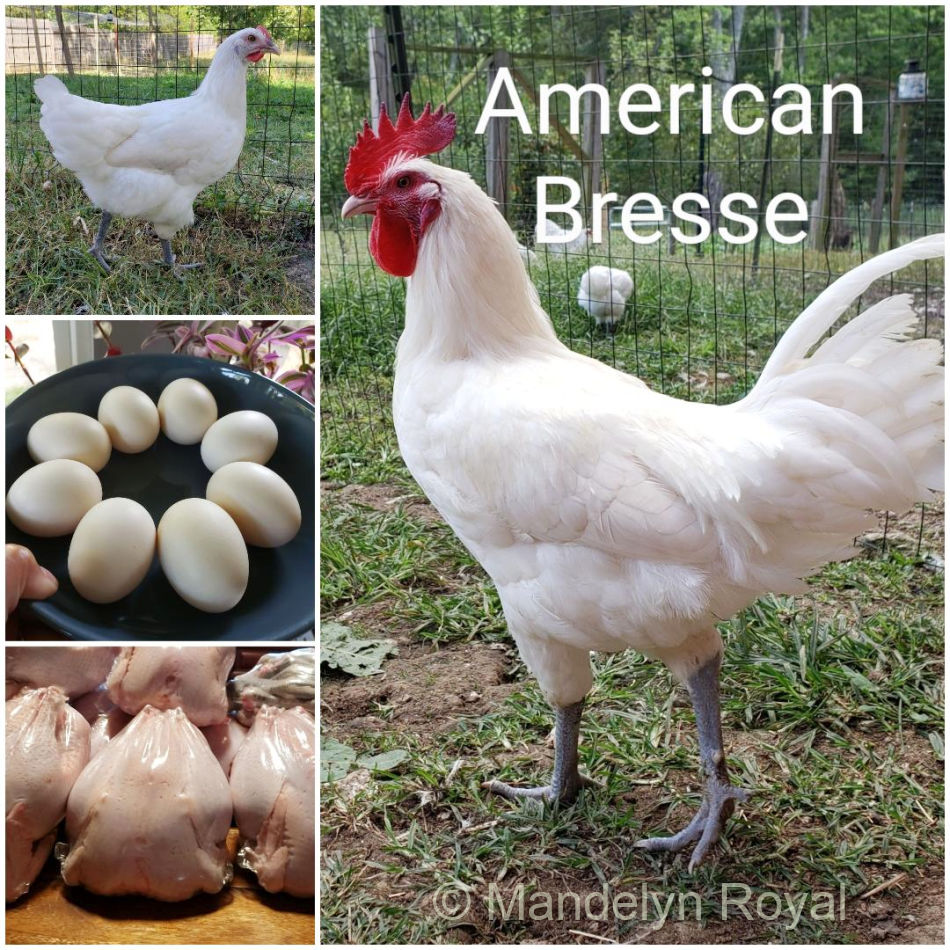
Photo credit: Mandelyn Royal.
